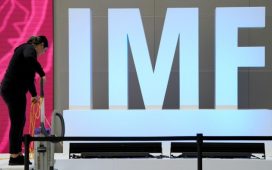• President Donald Trump has amped up his public criticism of Federal Reserve Chair Jerome Powell.
• A politicized central bank opens the door to higher inflation, higher interest rates, and a loss of confidence in the American financial system.
• Powell has been adamant that the Fed will maintain its independence and that he won’t step down before the end of his term in 2026.
The Federal Reserve’s independence is under fire again, and alarm bells are ringing louder this time around. Over the past week, President Donald Trump has returned to an old playbook and called for lower interest rates while criticizing Federal Reserve Chair Jerome Powell—a Republican who was first nominated to his post by Trump in 2018. Trump doubled down on Monday, warning that the economy could slow if Powell doesn’t cut rates soon.
The president has gone further than just calling for Powell to cut rates; he has raised the possibility of pushing the chair out of his job. “Powell’s termination cannot come fast enough!” he wrote in a social media post on Thursday.
But analysts say that lowering interest rates prematurely—and ousting the head of a federal agency designed to operate independently from the executive branch—could mean trouble down the line. Doubts about the Fed’s credibility could lead to higher inflation and long-term interest rates, meaning higher borrowing costs for businesses and higher consumer costs for credit cards, auto loans, mortgages and more. That’s to say nothing of the impact higher inflation has on households’ day-to-day living costs.
Less tangibly, a politicized Fed could undermine faith in the United States among global investors as a destination for their capital (which the government relies upon to finance its debt).
Trump’s rhetoric has triggered alarm bells for market watchers, many of whom believe that Powell’s termination would destabilize global financial markets, undermine the credibility of the US dollar, and set a dangerous precedent of a central bank that can bend under political pressure.
“I am very, very concerned,” says James Angel, an associate professor of finance at Georgetown University’s McDonough School of Business, “because this is not an isolated one-off of a politician grumbling about the Fed.”
Trump isn’t the first president to be critical of Fed policy. But while the consensus is that he wouldn’t attempt to force Powell out of his role, the president has repeatedly upended political norms. Wall Street embraced Trump’s reelection last year as a positive for the stock market. Now, huge tariff increases have blindsided analysts, stocks are flirting with a bear market, the dollar is falling, and US Treasury yields are rising as non-US investors question the traditional role of American investments as a safe haven.
Can Trump Fire Powell?
The heightened tensions come as the Fed is already in a tough spot. The landscape for US policy (especially trade policy) has changed dramatically over the past few months. Central bankers “don’t have a lot of clarity on what’s going to happen,” says Derek Tang, cofounder of monetary policy research firm LHMeyer. “Powell and his colleagues feel that the best strategy to get through this is to keep a steady hand and sit tight for a little bit,” he says. Meanwhile, Trump is pushing hard for lower rates to help boost the economy.
But Powell has been adamant that the Fed will not bend to political pressure. Last fall, he emphatically stated that he will not step down from his role if asked, noting that the president is “not permitted under the law” to remove him. He has also emphasized that the central bank will not rush to ease rates, even as markets whipsaw and the outlook for growth and inflation worsens amid the trade war. “For the time being, we are well-positioned to wait for greater clarity before considering any adjustments to our policy stance,” Powell told the Economic Club of Chicago.
The Fed has held its benchmark interest rate in a range of 4.25%-4.50% since the beginning of the year, amid sticky inflation and an uncertain outlook for tariffs and growth. The central bank eased the policy rate by a full percentage point last fall.
Treasury Yield and Federal-Funds Rate
undefined
Tang explains that an impending Supreme Court case concerning whether Trump can fire a federal official like Powell is adding to the unease. “There’s always been this assumption that the Fed is an independent agency,” he says. “That assumption is now being tested, and that’s making a lot of people very uncomfortable,” especially in financial markets.
The Fed has been criticized by past administrations, but analysts say the severity and consistently of vitriol in this case is alarming. “Trump is quite different,” adds Tang. “We have had presidents in the past who’ve applied various amounts of pressure on the Fed, but not to the same extent.” He says it’s not a given that Trump will remove Powell, even if the Supreme Court rules that he has the authority to do so. “Trump is not necessarily going to go through with it, because the financial markets would basically collapse,” he says. He points to the president’s about-face on tariffs once the bond market began showing signs of stress.
Inflationary Risks of a Compromised Fed
The Fed is accountable to Congress, but it makes monetary policy decisions related to its mandate—low, stable inflation and maximum employment—separate from both the legislative and executive branches. That’s by design.
“Country after country has discovered that central bank independence is essential for flighting inflation,” says Angel. “When you allow politicians to control the money supply, they have a nasty habit of printing too much money.” He explains that in the short term, the Fed can lower interest rates by buying government bonds, which would push down yields and lead to lower rates, more lending from banks, and more spending by households and businesses.
But there’s a downside to that. “Unfortunately, as that money works its way through the economy, all that extra money chasing the same amount of goods and services is going to push the price of those things up, and that makes inflation worse later on,” Angel explains. “Printing more money is exactly the wrong thing to do at this time.”
Inflation is difficult to correct—the last few years of stubbornly high price pressures are evidence of that. However, higher prices weigh on consumer sentiment and are frequently used as a touchpoint by politicians. “The Fed is always between a rock and a hard place,” Angel says. “If they print too much money, they cause inflation. If they print too little, they cause the economy to stagnate.”
US Credibility Undermined
Another potential consequence of Powell’s removal would be an erosion of confidence in US assets as reliable, safe havens for international investors. If the United States’ financial and political system is perceived as unstable and critical policies are unpredictable, foreign investors may demand a higher return on their money to compensate for those risks. Powell seems to have alluded to this issue in recent remarks, saying that if uncertainty remains high, “that would weigh on investment just in general” and the US would be “less attractive as a jurisdiction.”
Tang explains that in an uncertain environment, the risk premium of investing in the US should be higher. He says the implication of this is higher bond yields and lower asset prices. If the Fed is seen as unreliable or politically compromised, foreign investors could also look elsewhere—“capital flight” in Wall Street lingo.
With bond yields ticking higher over the last few weeks and the US dollar weakening, “there remain concerns about the US seeing capital flight,” wrote Strategas analysts on Monday. “The continuing spat between the administration and the Fed Chair doesn’t help.”
Angel adds: “The US dollar and the US Treasury bond are financial services that we offer the entire world. And what Trump is doing is trashing the basic export of the US.”
The author or authors do not own shares in any securities mentioned in this article. Find out about Morningstar’s editorial policies.








